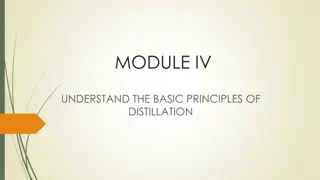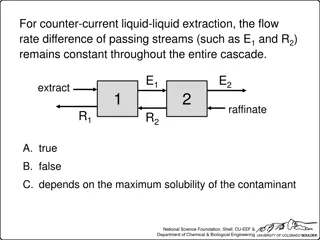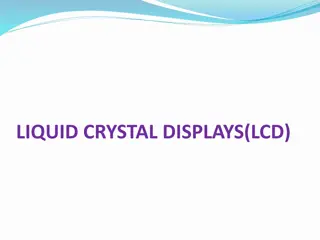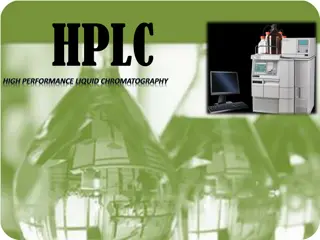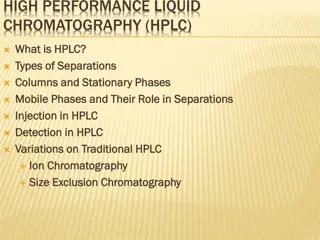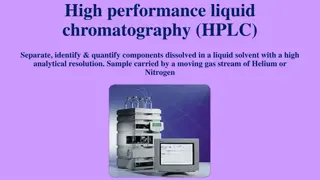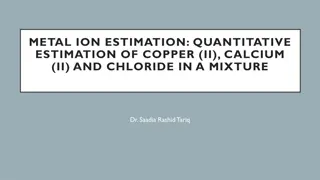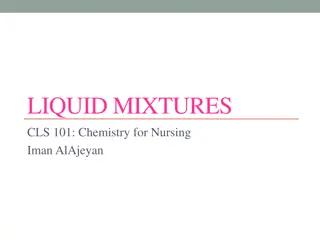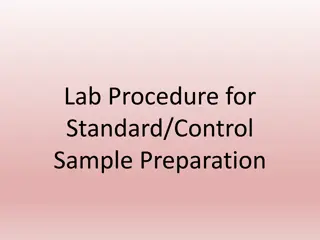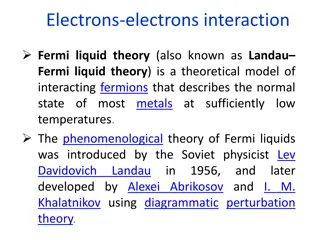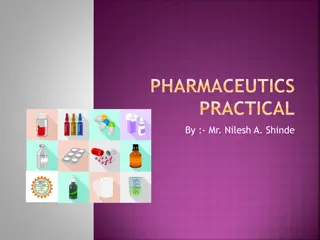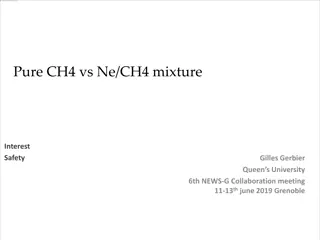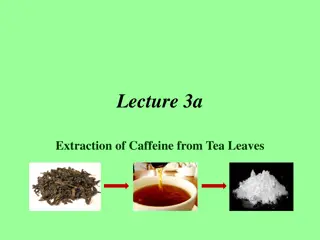Liquid mixture
Properties of solutions include solute and solvent definitions, factors affecting solubility, concentration types, and special solution properties like osmosis and osmotic pressure.
Uploaded on Feb 18, 2025 | 0 Views
Download Presentation

Please find below an Image/Link to download the presentation.
The content on the website is provided AS IS for your information and personal use only. It may not be sold, licensed, or shared on other websites without obtaining consent from the author.If you encounter any issues during the download, it is possible that the publisher has removed the file from their server.
You are allowed to download the files provided on this website for personal or commercial use, subject to the condition that they are used lawfully. All files are the property of their respective owners.
The content on the website is provided AS IS for your information and personal use only. It may not be sold, licensed, or shared on other websites without obtaining consent from the author.
E N D
Presentation Transcript
Liquid mixture Buffer solutions-types
Goals Understand the importance and properties of solutions Express concentration various ways Understand properties of emulsions, suspensions, and colloids Understand osmosis and dialysis General Properties of Solutions Solute - what is dissolved in the solvent Solvent - what dissolves the solute Doesnt have to be water. Alcohol, ether etc. Variable concentration Clear - may have color (jello) Homogeneous Dont settle Can be separated by physical means Pass through filter paper
Factors Affecting Solubility Temperature High temp solids more soluble, gases less. Pressure Only affects gases. High p more soluble. Surface Area Only affects rate of dissolving. Stirring Only affects rate of dissolving Nature of Solvent Like dissolves like. Importance of Solutions Drugs must be in solution to be absorbed into the GI tract. Liquids (syrups, elixirs) are more rapidly absorbed than powders (tablets).
Strength of Solutions Unsaturated - amount of solute less than maximum solution can hold (dilute) One package, two hands Saturated - amount of solute is the maximum solution can hold (concentrated) Two packages, two hands Supersaturated - holds more than maximum Many packages, two hands Heat solution with lots of solute then cool slowly. Expressing Concentration Percent solutions (w/v) Grams solute/volume solvent 100 Parts per million (ppm) Same as mg/L Ratio Solutions First number is amout solute, second is solvent 1100 means 1g solute in 100g solvent. Molar Solutions Moles solute/ volume solvent in L
Special Properties of Solutions Solutes increase boiling point and decrease freezing point compared to pure solvent. Solutes decrease surface tension Detergents, bile, lung function Osmotic Pressure Diffusion - molecules move from areas of high concentration to areas of low concentration. Osmosis - when diffusion happens across a membrane (cells, dialysis) Reverse Osmosis? Osmotic Pressure - amount of pressure we must apply to stop diffusion. Osmolarity molarity particles per molecule Or p MRT Body fluids about 300 miliosmol Plasma proteins (albumin) regulate osmotic pressure in blood
Solutions for diffusion - or not Hypotonic solution - the solution you are adding is less concentrated than what youre putting it into. Hypertonic solution - the solution you are adding is more concentrated than what youre putting it into How do these affect blood cells? Isotonic solutions - two solutions with same concentration Used after surgery, to prevent dehydration. Dont effect blood cells. Suspensions Many medications are suspensions Milk of magnesia, antibiotics, nebulized drugs suspended in air Properties Dont dissolve Heterogeneous Not clear Settle Dont pass through filter paper or membranes
Colloids, continued Tyndall effect - laser passes straight through solutions, scatters in colloids and suspensions. Brownian Motion - molecules are always moving by haphazard collisions. This keeps molecules from settling. Watch dust in a sun beam. Subclasses of Colloids Gels - hydrophillic, semisolid, dont flow Sols - hydrophobic, pour easily Aerosols colloidal dispersions in air Hemodialysis Dialysis separates colloids from solutes by semipermeable membrane. Colloids are RBCs and proteins, solutes are sodium chloride, other inorganic salts, and metabolic waste products.
Emulsions Two immiscible compounds mixed Temporary if they settle on standing Oil and water Permanent if they dont Mayonnaise (oil and water with an emulsifying agent - egg white) Neither are clear.


